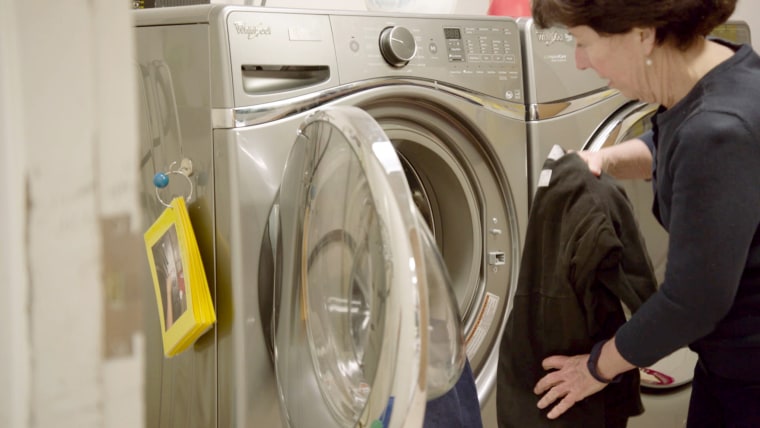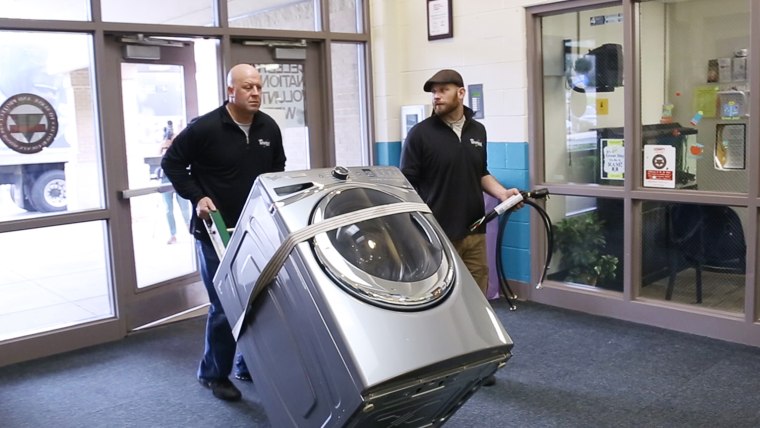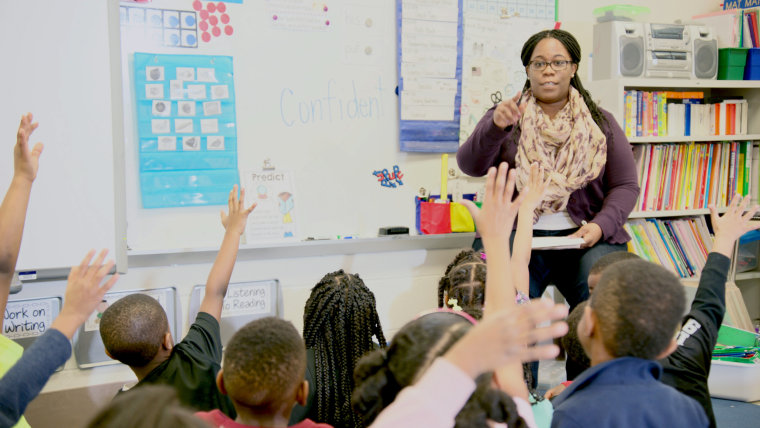Update: Research from the 2016-17 school year shows that high-risk students attended school nearly two more days a month while participating in the laundry program and that almost all of the participating high-risk students raised their attendance rates to 91% during the program.
More than 1,000 school representatives — from all 50 states and as far away as Saudi Arabia, Ireland, and South Africa — have reached out to Whirlpool and requested to join the program since it launched.
Remember middle school? Remember how everything could be mortifying, especially if you didn't have the right brand of jeans or that certain kind of backpack or the expensive boat shoes everyone else (yes, everyone, Mom!) has?
Now imagine middle school if you not only couldn't afford those brands, but you couldn't even find a way to clean the clothes you do have. The prospect might just be mortifying enough to make you skip class altogether.
Two school districts have found that the secret to raising attendance rates in schools in low-income areas could be as simple as providing laundry machines.
“One of my students had just sort of withdrawn from school completely,” Alison Guernsey, a seventh grade English teacher in Fairfield, California, told TODAY Parents. “After we started the program, he was more excited about coming, and he started to be actively engaged in class. He didn’t feel like an outsider anymore,” she said.

At Guernsey's school — David Weir Preparatory Academy, a K-8 public school east of San Francisco — 94 percent of the student population is in the free and reduced lunch program, meaning students come from low-income homes.
Never miss a parenting story with TODAY’s newsletters! Sign up here
In 2015, the school participated in an experiment introduced by Whirlpool as part of its Whirlpool Care Counts Program: Whirlpool installed a washer and dryer in the school and provided cloth laundry bags, garbage bags, detergent, and fabric softener. Then, the school administration discreetly invited a group of students who had missed more than ten days of school the year before to bring clothes with them to school to be cleaned while they were in class. Key words: in class.
“What I see is that if kids feel like they don’t fit in — if they feel like they are missing something from the norm — then they don’t want to participate in activities or sometimes even come to school,” Guernsey said.
Back to school: See all of TODAY's back to school stories here

“Many of our students are transient,” said Guernsey. “Some are homeless, or they might stay with family members, but they don’t have a stable home or money or resources.” Guernsey said teachers have tried to help in the past by taking clothes home themselves to clean or by buying students clothes when they have none, they couldn’t cover all the students’ needs and sometimes couldn’t get them to come to school for months at a time.
But after they started washing the students’ clothes at school, they began to see a difference, said Guernsey.

One girl, Guernsey said, “completely changed” after the school began washing her clothes. “Before, she would hardly speak in class. She was very quiet and didn’t have many friends. She’s blossomed now — she came into her own.”
RELATED: New Rhode Island law requires recess in elementary schools
Guernsey’s principal, Martha Lacy, saw these results as well. “Attendance is one of your main responsibilities as a principal,” she told TODAY Parents. “Over the years, I knew there were many factors that kept kids from getting to school, including that some of them would just stay home if they didn’t have clothes to wear.”
“It’s easy to be judgmental of parents whose children don’t come to school if you don’t have a frame of reference for their situations,” said Lacy, noting that many students live in homes with domestic violence, incarcerated parents, or multiple families living together. “But you don’t penalize the kids for their situations,” she said.
In its first year, the Whirlpool program helped 17 schools in two school districts. They found that in that year, 93 percent of participating students increased their attendance after they were provided with clean clothes, with at-risk students attending almost two more weeks of school than the year before. Teachers in the schools surveyed said they saw dramatic increases in classroom and extracurricular participation as well as student motivation.
RELATED: See if your state has a tax holiday for back-to-school shopping
“We have a motto on our campus: no excuses,” said Lacy. “That’s for the adults, not the kids. There is no excuse for us not to do everything possible for the kids to be successful.” Lacy said that for students at her school washing their clothes last year was a “turning point.”
“This program has made a difference,” she said, “and if we can make a positive difference with even one student, it’s worth it.”
Editor's Note: This story was first published on July 29, 2016, and has been updated.
Related video: